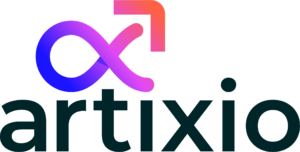Bringing a medical device to the US market involves more than just paperwork — the FDA often expects early discussions with manufacturers. The FDA’s Q-Submission program is meant to take some of that guesswork away. Think of it as a chance to ask the FDA questions before you submit your file — whether it’s about testing, study design, or the paperwork itself. Many companies use these “pre-sub” meetings to avoid surprises later, and in most cases, it saves them both time and money.
Below we explain about the types of Q-Submissions, how the meetings work, and why they’re critical for successful medical device submissions.
Q-Submission Meetings
Creating a Q-submission demands careful preparation and strict adherence to guidelines. Q-Submission is a formal written entreaty made by an applicant or US Agent to the FDA, seeking feedback through an official written response, a meeting, or a teleconference. The FDA does not impose any charges for Q-Submission meetings. Participation in the Q-Submission program is entirely voluntary for the submitter.
Contact us for
Types of Q-submission Programs
Several Q-Submission Programs serve distinct purposes. It’s important to note that specific interactions with the US FDA, such as those concerning Medical Device Development Tools (MDDT), administrative processes tied to submissions, or communications linked to submission reviews, as well as RFD and Pre-RFD interactions related to combination products, do not fall under the category of Q-Submission Programs.
Pre-Submission Meetings
A Pre-Submission (Pre-Sub) allows applicants or US Agents to seek insights through written responses, meetings, or teleconferences before a premarket submission, such as IDE, PMA, HDE, De Novo request, 510(k), Dual, BLA, IND, Accessory Classification Request. A Pre-Sub should include specific questions concerning topics relevant to the planned submission, such as biocompatibility and bench testing. Pre-Subs can be useful for various submission types, including other Q-Submissions, like Accessory Classification Requests, and are especially recommended for Predetermined Change Control Plans (PCCPs) to simplify premarket reviews. Pre-Subs offer an opportunity to collaborate with the US FDA proactively, contributing to streamlined regulatory processes.
Also Read: Medical Device Registration Process in USA by US FDA
Submission Issue Requests (SIRs)
A Submission Issue Request (SIR) is a formal request directed to the US FDA, seeking feedback through written responses or meetings regarding a proposed approach to address issues raised in certain FDA letters, including marketing submission hold letters, IDE Letters, or IND Clinical Hold letters. SIRs serve as a means to promptly resolve questions concerning these issues and facilitate communication between the FDA and submitters.
The intent is to address the concerns outlined in these letters effectively, allowing projects to progress. SIR isn’t meant for pre-review of formal responses or to discuss final decisions conveyed by FDA letters. Submitters are expected to provide formal responses within the designated timeframe, whether or not a SIR is submitted. Simple clarification requests or issues that don’t require management involvement are not suitable for SIRs, nor are discussions during the active review of a file.
Study Risk Determinations
A Study Risk Determination involves requesting the FDA to determine the level of risk associated with a planned medical device clinical study, classifying it as significant risk (SR), non-significant risk (NSR), or exempt from Investigational Device Exemption (IDE) regulations. If the study isn’t exempt, sponsors initially decide whether it’s SR or NSR and present this determination to the Institutional Review Board (IRB). While sponsors, clinical investigators, and IRBs can collaborate to make this risk assessment, the US FDA is the ultimate authority on SR or NSR classification. The FDA’s determination is essential when submitting an IDE to the US FDA or upon request by the sponsor, clinical investigator, or IRB.
Also Read: 510(k) Registration with US FDA
Informational Meetings
Not every FDA Q-Submission meeting is about getting feedback. Sometimes manufacturers simply want the Agency to be aware of upcoming medical device submissions. This is where an informational meeting fits in. It allows companies to introduce the FDA review team to new devices — particularly when the technology is very different from products already on the market.
These meetings are often scheduled when multiple pre-submissions are expected within the next 6–12 months. The FDA usually listens during these discussions, asking clarifying questions if needed, but formal feedback is not the goal of this type of Q-Sub.
PMA Day 100 Meetings
Q-sub meetings take place about 100 days after a Premarket Approval (PMA) application is filed and are treated as part of the Q-Submission program. To get on the calendar, the request should go in no later than 70 days after FDA accepts the PMA. When you submit the request, make sure to note how you’d like to meet — in person, phone, or video — who from your team plans to join, and a few date options that would work.
Agreement and Determination Meetings
A Determination Meeting is relevant to prospective PMA or PDP submitters and provides with the US FDA’s determination of the required scientific evidence to establish a device’s effectiveness for its intended use. The meeting helps decide if clinical studies are necessary and seeks the least burdensome approach to evaluating device effectiveness with a reasonable chance of success. The Agreement Meeting is open to anyone planning to investigate class III products or implants, including 510(k) submitters of eligible devices. It aims to reach an agreement on key investigational plan parameters, including the clinical protocol, typically held within 30 days of the meeting request.
Also Read: US Agent Responsibilities for FDA Compliance
Breakthrough Device Designation Request
The Requests for Breakthrough Device Designation to seek inclusion in the Breakthrough Devices Program based on the criteria or Interactions concerning Designated Breakthrough Devices: To request feedback on device development and clinical protocols for devices that have previously been designated as breakthrough devices.
Safer Technologies Program (STeP)
Submissions associated with the Safer Technologies Program include requests to Enter STeP, to apply for inclusion in the Safer Technologies Program and to request feedback on device development and clinical protocols for devices previously included in STeP.
Accessory Classification Requests
Accessory Classification Requests can be either for an existing accessory type or for a new accessory type. Under this Q-sub program, the submitter can request classification for an accessory that has marketing authorization as part of a premarket submission for another device. The classification request of a new accessory should be submitted in conjunction with the premarket submission for the parent device. These Accessory Classification Requests are treated as Q-Subs and undergo concurrent review and decision-making alongside the parent premarket submission.
Benefits of Q-submission:
The Q-submission program offers several advantages, such as engaging with FDA specialists, obtaining feedback, and promptly establishing areas of agreement. This program is accessible to any sponsor seeking feedback on a prospective or planned medical device submission, including:
- Investigational Device Exemption (IDE) Applications
- Premarket Approval (PMA) Applications
- Humanitarian Device Exemption (HDE) Applications
- De Novo requests (Evaluation of Automatic Class III Designations)
- Premarket Notification (510(k)) Submissions
- Accessory Classification Requests
Requirements for Q-Sub Application for FDA Meetings:
The core components of a Q-Submission include the following elements. When preparing a Q-Submission for the FDA, a few key items must always be included. These details help the Agency understand your request and ensure the discussion stays on track. A well-prepared package not only makes the process smoother but also gives manufacturers clearer feedback on their device development and submission strategy. One important point to remember: all Q-Sub documents should be written in English and follow the format described in the FDA’s guidance.
- Cover letter
- Contact details
- Singular Q-sub type per application
- Preliminary agenda detailing topics and estimated presentation times
- Meeting format preference (in-person or teleconference)
- Three or more proposed meeting dates and times
- Anticipated attendees with their respective positions, titles, or affiliations
- Objective
- Description of the Product
- Intended Uses
- Regulatory Background
How to Apply for an FDA Q-Submission
Here are the Steps to apply for the Q-Submission program of how companies usually handle:
- Figure out what you need – Is this just to update FDA on your device, or do you want feedback before filing a 510(k) or IDE? That’ll tell you if you’re looking at a Pre-Sub, an SIR, a Study Risk request, or something else.
- Get your story straight – Put together the basics: what the device is, what testing you’ve done so far, and the specific questions you actually want answered.
- Send it in – File the Q-Sub with a cover letter, agenda, possible dates, and a list of people who’ll attend.
- Work out the schedule – FDA usually sets aside about an hour. Meetings can be in person, over the phone, or video.
- Show up ready – Walk FDA through your questions and data. Don’t expect them to solve everything on the spot, but they’ll flag issues you need to fix.
- Use their notes – FDA follows up in writing, and those comments often shape how the main submission is put together.
Conclusion:
Talking to the FDA early can take a lot of the guesswork out of medical device submissions. The Q-Submission program isn’t just paperwork — it’s a chance to get real feedback from reviewers, understand what they expect, and avoid running into avoidable roadblocks later on.
For companies planning to enter the U.S. market, this program isn’t just helpful — it can be a real time-saver. If you’re looking for hands-on guidance with preparing or managing your Q-Submission, the team at Artixio can support you through every step.




